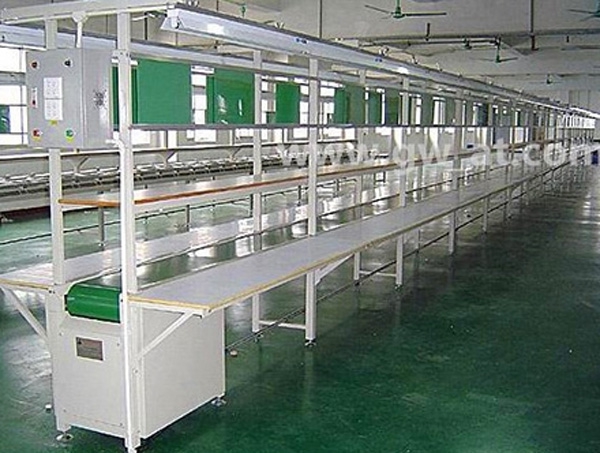What problems should the assembly line pay attention to in daily operation?
1. Start and stop
The conveyor should start and stop at no load if possible. Starting under load not only increases the strain of equipment, but also directly causes fracture. If there are special circumstances in which it is necessary to stop the belt line or hoist under load, a backstop device must be used to prevent reverse movement and material accumulation at the end.

2, inspection and lubrication
In order to facilitate the inspection and lubrication work, channels, platforms, railings, treadles and ladders need to be set up around the production line to facilitate traffic. Spacious upper space, convenient inspection holes, adequate light, dry pits and tunnels, all facilitate inspection and lubrication of the physical conditions.
It is necessary to have a lubrication and inspection work plan in order to carry out thorough inspection and lubrication regularly. Its content requires, first of all, the establishment of a correct set of procedures and, secondly, the establishment of a clear system of post responsibility for the smooth implementation of these procedures. A lubrication and maintenance chart of the main parts is usually prepared, which is signed by the person in charge after completing the assigned work tasks according to the specified time.
3, Z large size
The large size of the material installed on the conveyor must be kept within the design range and must be strictly implemented.
4, prevent overload
The velocity of the flow of goods entering the equipment must always be adjusted to within its energy allowance. If it is unavoidable that sometimes the load is too much, a properly sized funnel should be set up and a suitable feeder should be used to discharge the material. Material leakage must be avoided, especially those materials that are easy to damage the transmission part of the conveyor belt. This is because these scattered material can easily bury or jam the moving parts of the transmission parts, so that the machinery fails or is damaged.
5. Seasonal operation
If the operation is seasonal (i.e. a long period of idle time), the equipment must be disassembled, cleaned, lubricated and preserved when not in use. If dismantling is not easy, idle equipment must be operated periodically for short periods so that its working parts are always in a flexible state.
6. Overload protection
Despite all the care taken, accidental or accidental blocking can occur. In this case, the chain conveyor belt or the whole machine may reach the rupture load. The proper way is to install overload protector on the conveying line. This kind of protective device must be checked regularly (preferably once a month) and its function must be effective.
First, check electrical, pneumatic and hydraulic circuit connections. If no problems are found in the above three steps, then check all circuits. Check whether the conductor in the circuit is short circuited, especially whether the conductor in the groove is cut by the groove because of pulling. Check trachea for damage creases. Check whether hydraulic tubing is blocked. If the trachea is badly creased, replace it immediately. Hydraulic tubing should be replaced as well.